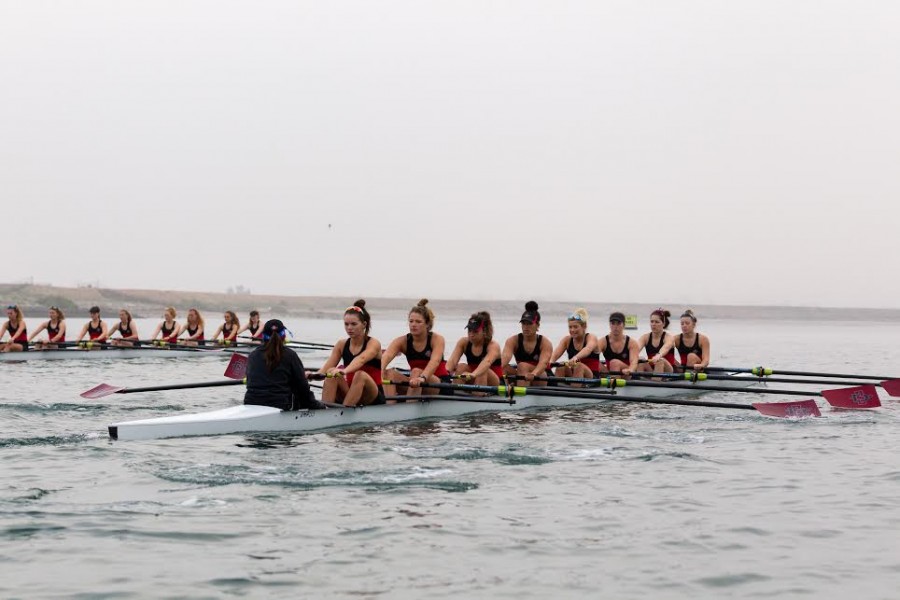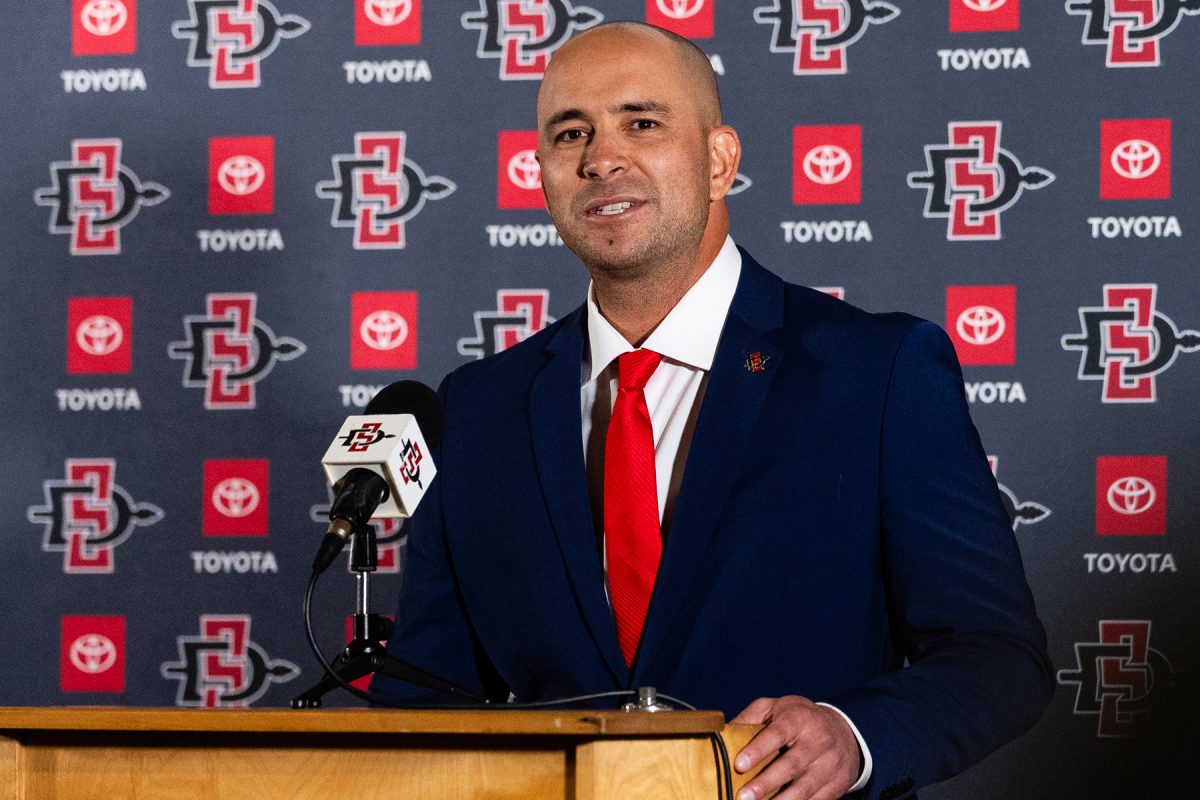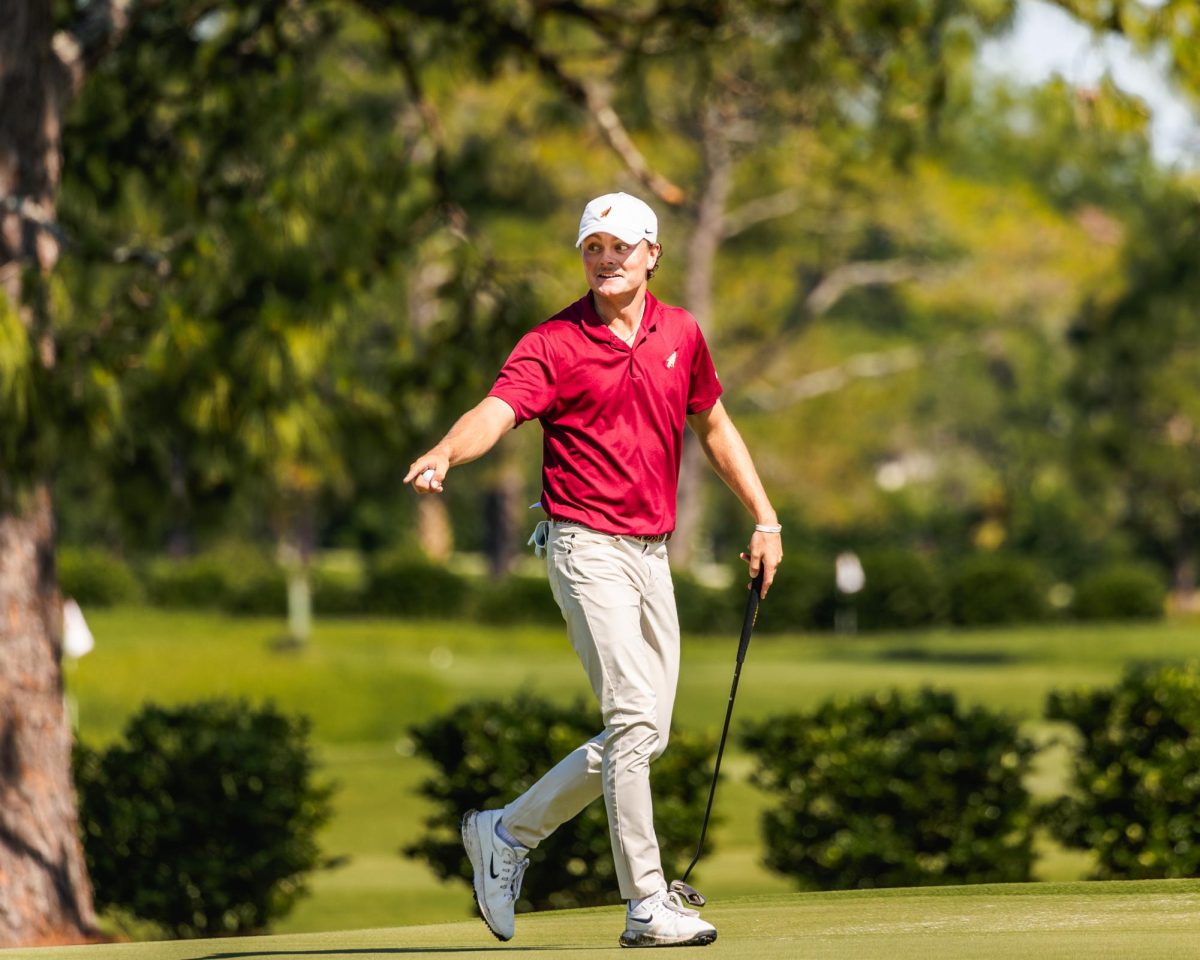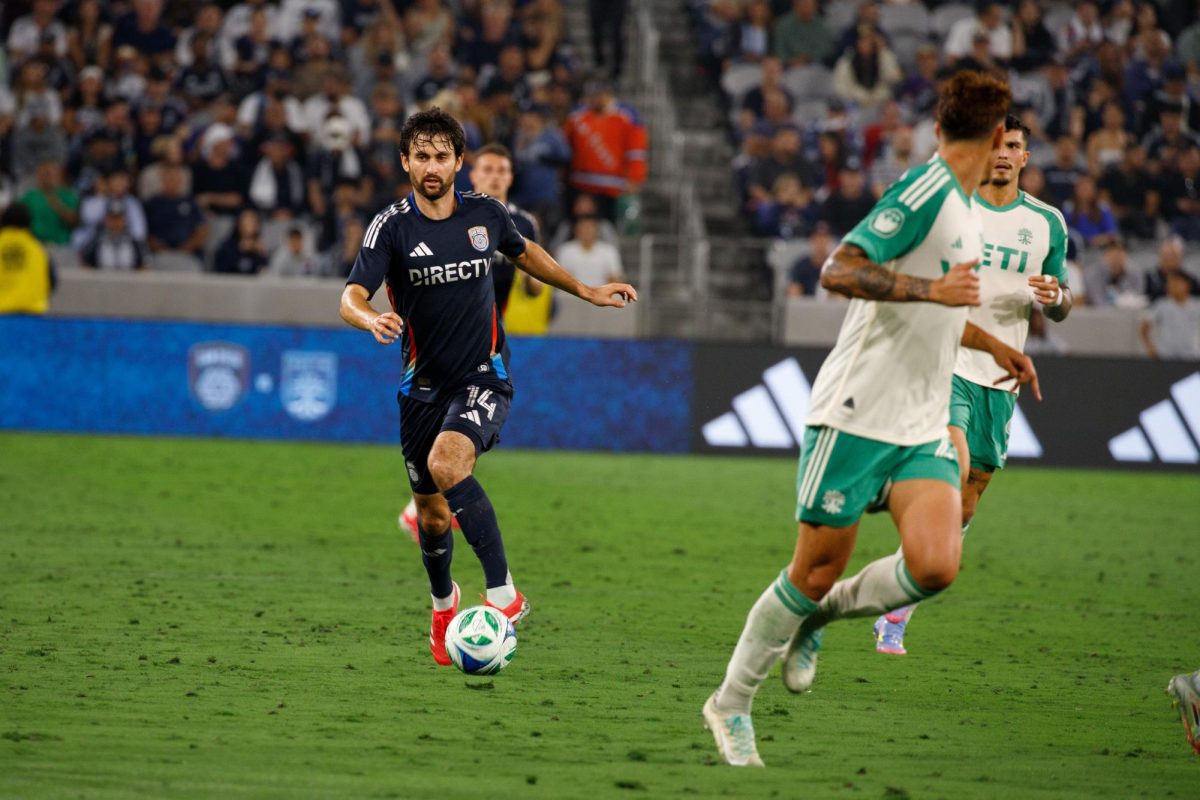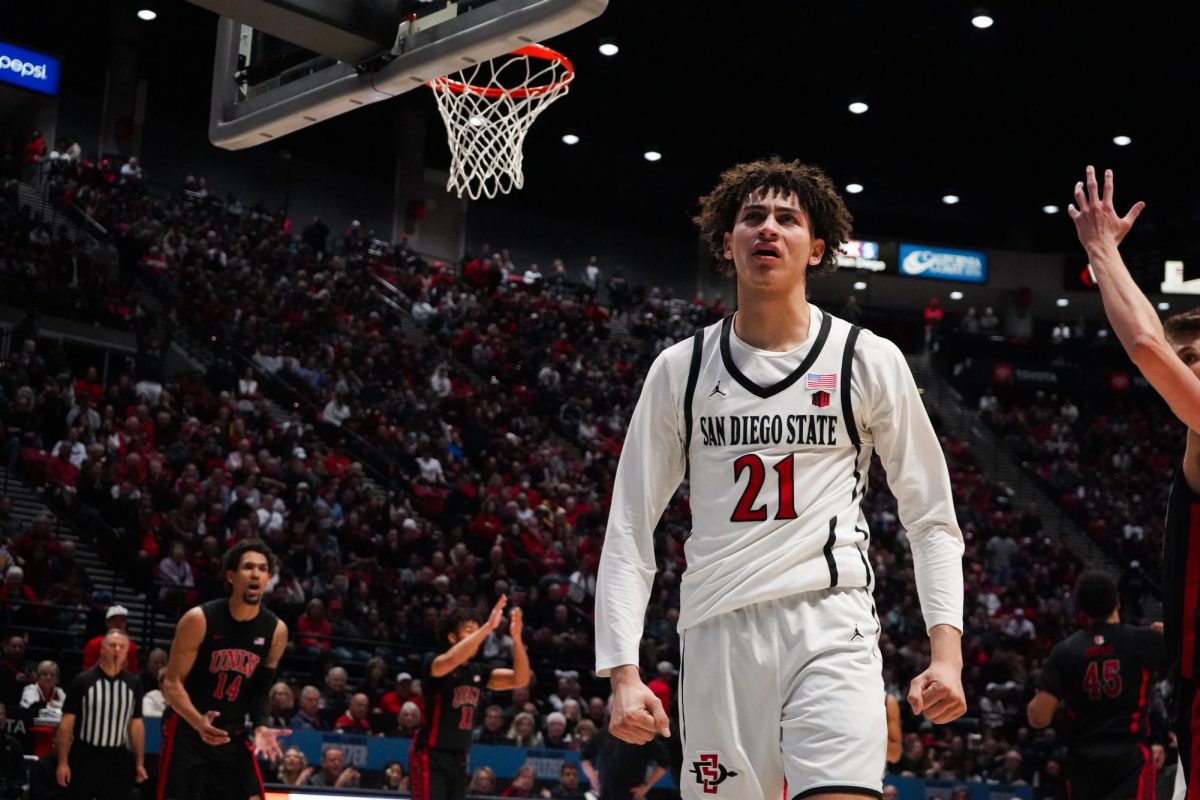San Diego State prides itself in being one of the premier destinations for college sports.
From men’s basketball to women’s soccer to baseball and many others, SDSU’s athletic programs fight other colleges across the country for the most sought-after recruits’ signatures. However, one slight exception to this commonality lies within the rowing team.
Rowing is unique from most other sports in that rather than strictly recruiting new, and transfer, students, it opens the door for everyone and anyone to join, as long as they possess the level of determination needed to stay afloat with the rest of the competition.
Out of the 60 rowers on the team, 35 are either walk-ons or recruited walk-ons
A recruited walk-on is someone who doesn’t have any experience rowing, but was still recruited to do so.
One non-recruited walk-on is sophomore Sara Avery.
“(Our freshman class) got an email from one of my coaches saying, ‘Hey, this is a great sport for anybody to try out and anybody is welcome,’” Avery said. “The drive of everyone else trying out made me want to do it.”
In just her first year, Avery moved up to be a part of the top boat, which is comprised of the eight best rowers on the team.
She has stayed in that spot through this season.
Many of the people in the top boat were recruited to be in that position, but that doesn’t make it awkward for the walk-ons to also be there.
“When you walk on it’s really intimidating because you’ve never done it before and all these girls who’ve been recruited have been doing it for years and years,” Avery said. “But all the girls on the team are so nice and really helpful to any of the walk-ons … they’re on the team just as much as we are.”
The fact that walk-ons are a part of the top boat doesn’t mean that the sport is a breeze, though.
Not even taking the physicality of rowing into mind, the rowers endure a grueling schedule, with wake-up calls before 5 a.m. every morning from Monday to Saturday, when practice starts at the Mission Bay Aquatics Center.
All this, expected from student-athletes who many times were not expected to have “athlete” attached to their college resume.
Even with the openness of the sport and the amount of walk-ons, there are still quite a few rowers who were recruited specifically to row for the Aztecs.
These athletes are instrumental in helping and teaching the new rowers how to become familiar and comfortable with the rowing lifestyle.
“It definitely takes everyone’s help to bring them up to speed with everything. Some of us have been rowing for so long and we know the ins and outs of it,” said sophomore Isabelle Paul, who was recruited out of New Zealand and is also a part of the top boat. “You have to think, what are they going through, and just always ask if they’e OK or if they need help so they’re comfortable.
“I think sometimes they think there’s a stigma against them, but there’s actually not.”
Another contributor to the veteran leadership is senior Stephanie Schulman.
Schulman falls in the middle category as a recruited walk-on, and has seen the rowing program in its entirety, being present for a coaching change as well as the progression and hard work put in by past walk-ons.
“It’s how much work you put into it. A walk-on can easily rise up like Sara (Avery) to become one of the top girls on our team or it might not click,” Schulman said.
Rowing head coach Bill Zack, who brings experience from years coaching with the Unites States Coast Guard Academy, Sacramento State, UCLA and University of Portland, is mostly in charge of helping the top two boats, so he doesn’t usually work with walk-ons right off the bat.
However, if they at some point reach that stage, he has a direct impact on someone who wouldn’t have been there in the first place without rowing’s openness to the walk-ons.
“Any coach in any sport will tell you they’ll take anyone that’s a good student-athlete. From our perspective, it doesn’t matter how you become a good rower. If we could get the rowers we needed from high school rowing, we might not necessarily do on-campus recruiting,” Zack said.
“Roughly half of the men’s and women’s olympic rowing teams are people who didn’t row until they got to college. You can start in college to eventually making the olypmic team, so there’s a lot of potential there.”
Rowing is a walk-on friendly sport, as evidenced by the success of those who previously did walk on.
But Zack doesn’t let that be a guarantee to anyone who thinks they can just waltz in and automatically be on the team.
“We don’t promise anyone anything, other than that we’ll teach you how to row and give you that opportunity,” he said. “It’s up to you to take advantage of it.”



